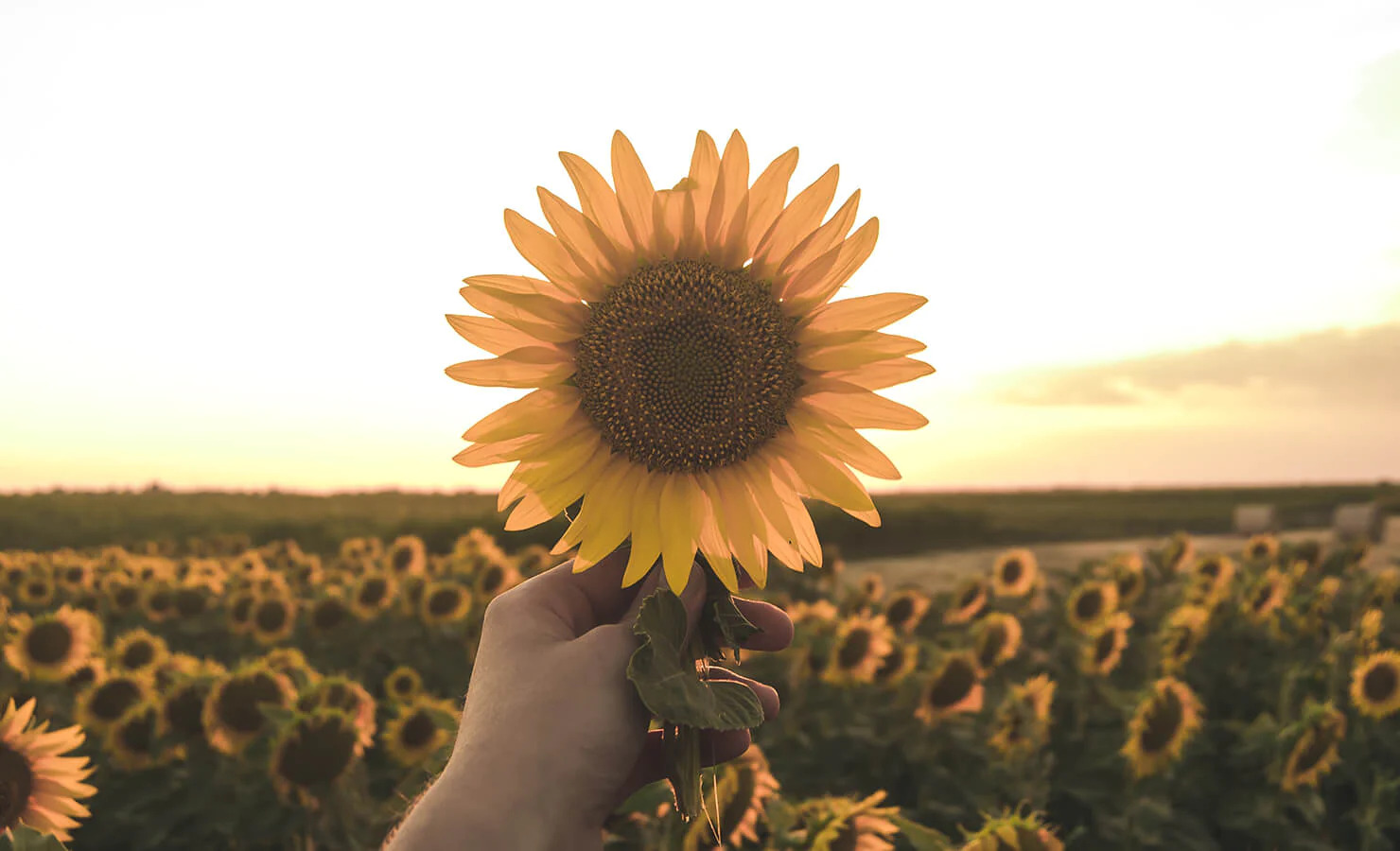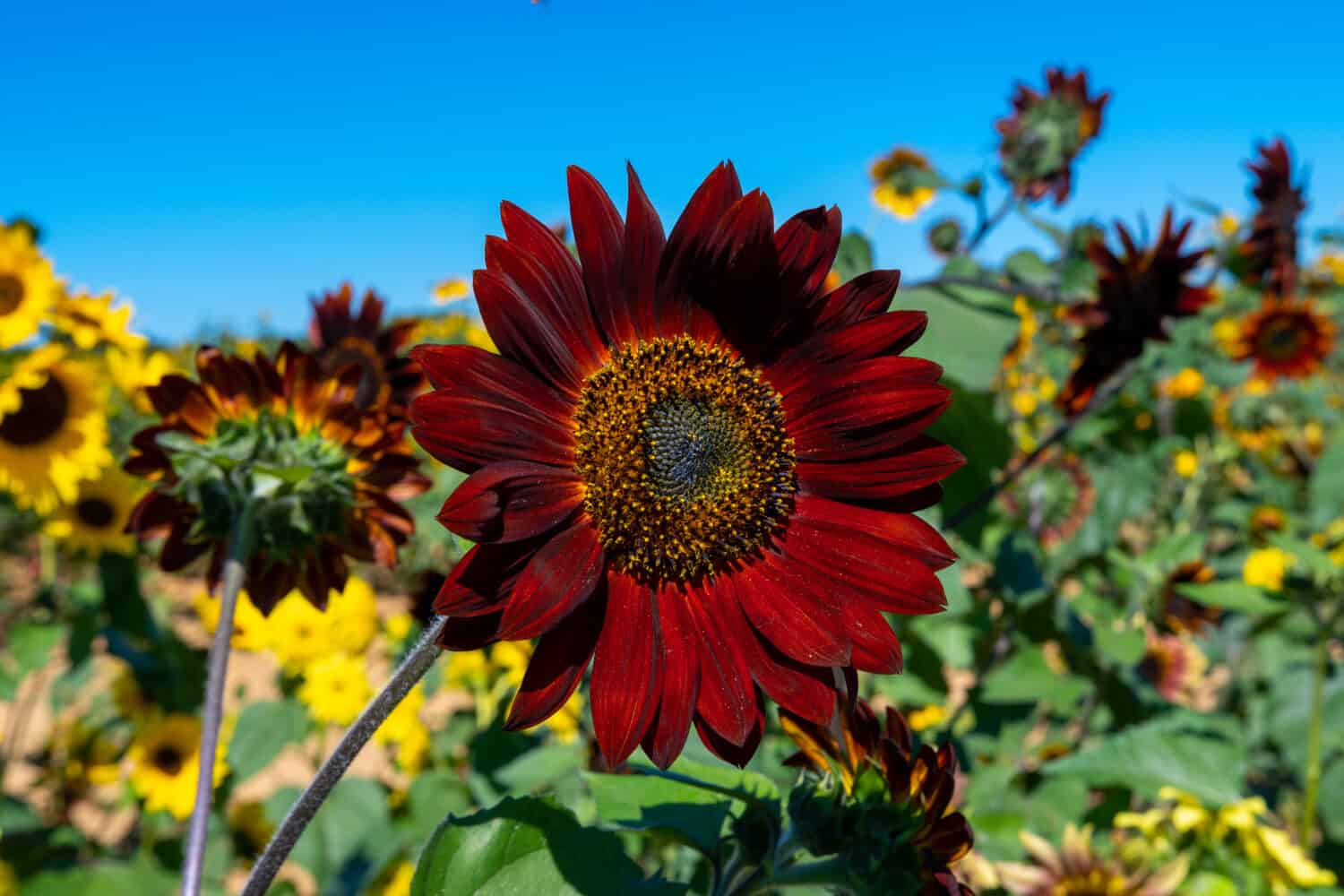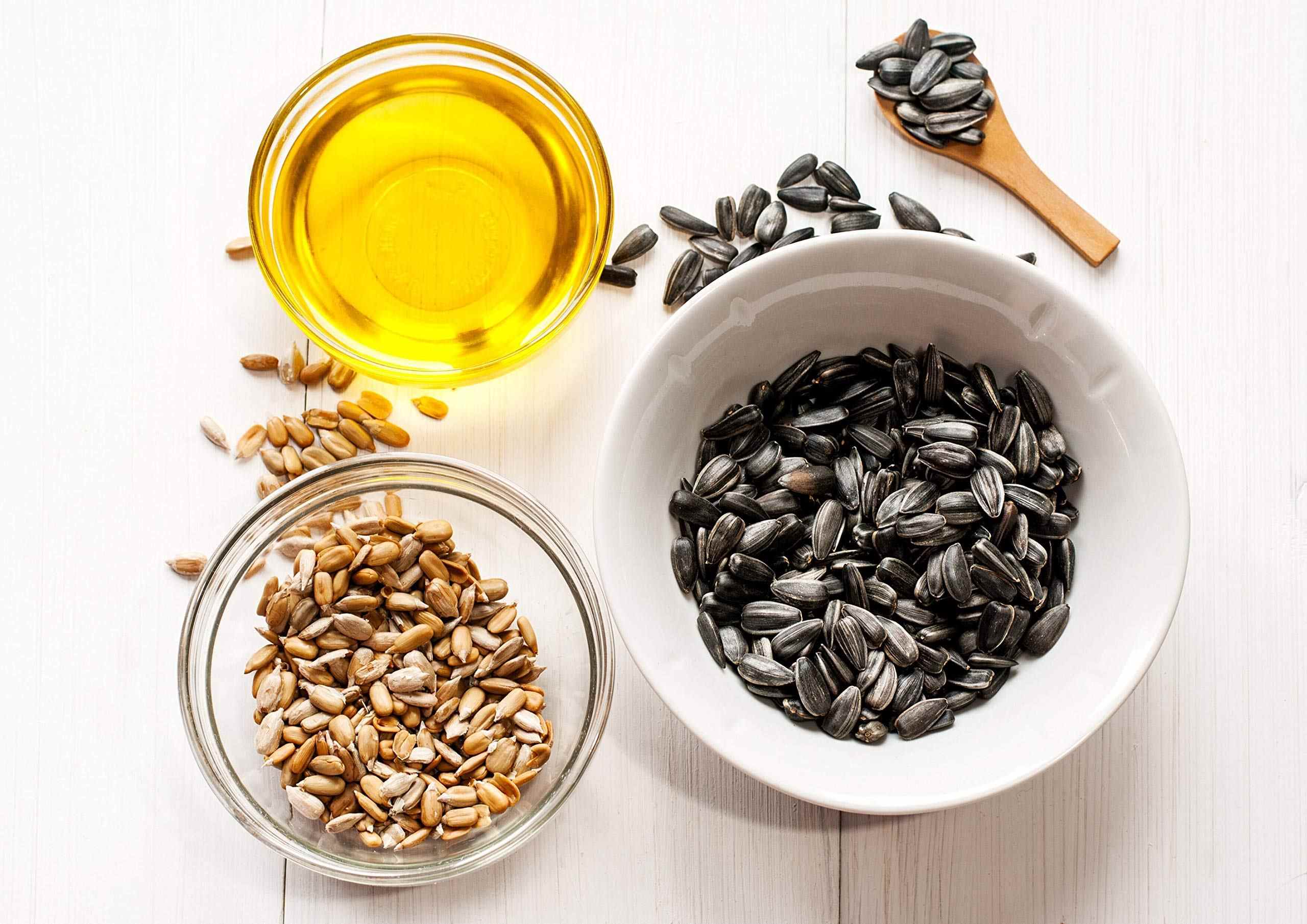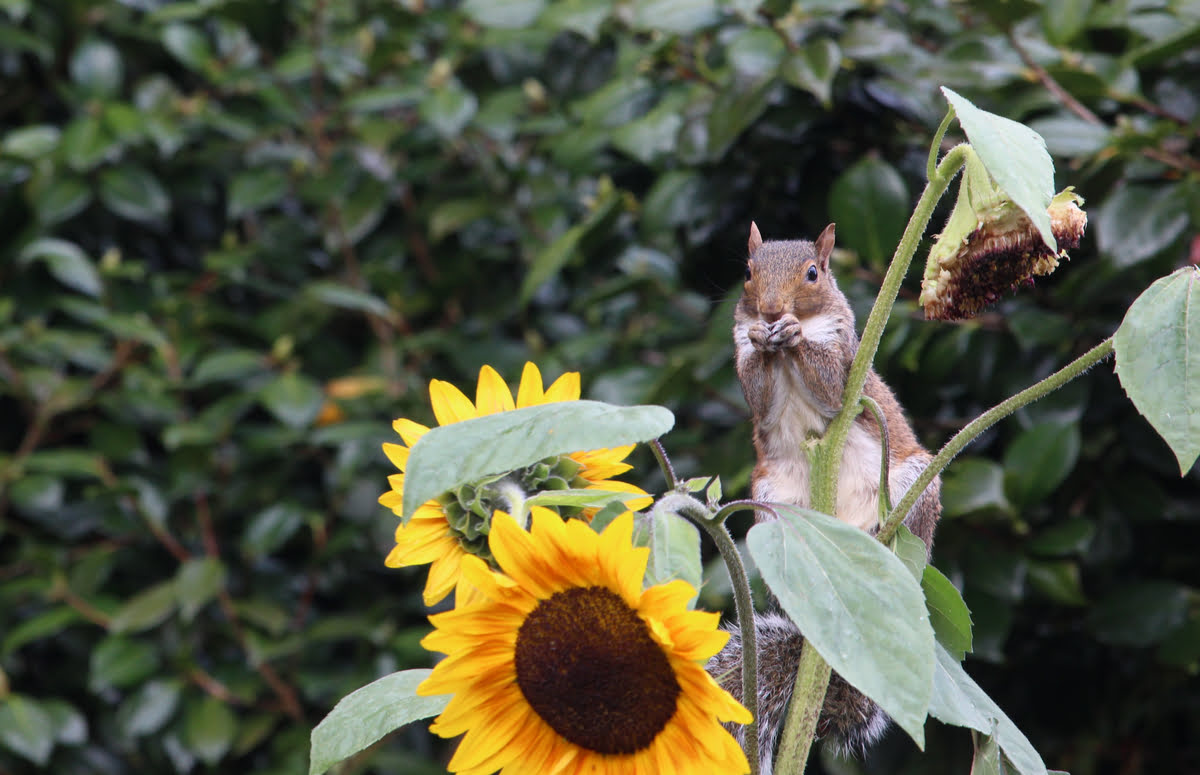Home>Gardening News and Trends>Latest News>What Are The Meaning Of Sunflowers


Latest News
What Are The Meaning Of Sunflowers
Modified: January 22, 2024
Discover the meaning behind sunflowers and stay updated with the latest news. Explore the symbolic significance and find out more about the popular flower.
(Many of the links in this article redirect to a specific reviewed product. Your purchase of these products through affiliate links helps to generate commission for Chicagolandgardening.com, at no extra cost. Learn more)
Table of Contents
Introduction
Sunflowers, with their vibrant yellow petals and towering stalks, have captivated human beings for centuries. With their undeniable beauty and unique characteristics, these flowers hold deep meaning and symbolism in various cultures. From their representation of positivity and strength to their association with the sun, sunflowers have become a beloved and iconic bloom.
Native to North and South America, sunflowers (scientifically known as Helianthus) are often referred to as “the happy flower” due to their bright and cheerful appearance. They have a distinctive appearance, with large, round faces and petals that resemble the rays of the sun. Sunflowers can grow to impressive heights, reaching up to 10 feet or more, making them a striking addition to gardens and landscapes.
Throughout history, sunflowers have held different meanings and served various purposes. In some cultures, they represent adoration and loyalty, while in others, they symbolize longevity and good luck. Their association with the sun also adds another layer of symbolism, depicting warmth, happiness, and positive energy.
Moreover, sunflowers have gained significance in spiritual practices and beliefs. They are often linked to enlightenment, spiritual growth, and the awakening of one’s inner light. Cultivating a connection with the sunflower is believed to bring forth feelings of joy, optimism, and personal transformation.
Not only do sunflowers hold symbolic meaning, but they have also inspired artists and writers throughout the ages. From Van Gogh’s iconic painting, “Sunflowers,” to the mention of these radiant blooms in literature, sunflowers have become a subject of creativity and admiration. They have been depicted as symbols of beauty, resilience, and the pursuit of happiness, serving as inspiration for countless works of art and literature.
There is a wide variety of sunflowers, each with its own unique characteristics and symbolism. From classic yellow sunflowers to rare red or multicolored ones, these blooms offer a range of meanings and aesthetic appeal. Whether you are looking for a symbol of friendship, love, or positivity, there is a sunflower variety to suit your needs.
If you are interested in growing your own sunflowers, there are some helpful tips and tricks to ensure a successful garden. From selecting the right location and sowing seeds to proper watering and maintenance, these guidelines will help you cultivate beautiful and thriving sunflowers.
In this article, we will explore the fascinating meanings and symbolism of sunflowers, their cultural and spiritual significance, their representation in art and literature, the various sunflower varieties and their meanings, as well as provide valuable gardening tips for those who wish to grow their own sunflowers.
Symbolism
Sunflowers hold a rich history of symbolism across different cultures and societies. Their vibrant yellow petals and ability to follow the sun’s movement throughout the day have made them a symbol of positivity, happiness, and strength.
One of the key meanings associated with sunflowers is their representation of adoration and loyalty. The flower’s bright and radiant appearance is often seen as a reflection of the sun’s unwavering love and devotion. Sunflowers are frequently given as gifts to express feelings of admiration and deep affection towards someone.
Furthermore, sunflowers symbolize longevity and good luck. Their tall and upright stems, reaching towards the sky, are believed to bring blessings of prosperity and longevity to those who possess them. In some cultures, sunflowers are planted near homes to ward off negative energy and attract good fortune.
Another aspect of the sunflower’s symbolism lies in its association with the sun itself. Just as the sun provides warmth, energy, and sustenance to the world, sunflowers are linked to bringing positivity, happiness, and optimism into the lives of individuals. They serve as a reminder to always seek the light, even in the darkest of times.
In addition to their positive symbolism, sunflowers also represent resilience and strength. Despite their delicate appearance, these flowers are remarkably resilient and can withstand harsh conditions. They symbolize the ability to overcome challenges and thrive in adversity, making them a powerful emblem of resilience and determination.
Moreover, sunflowers hold a special symbolism within friendships. They are often associated with loyalty, trust, and unwavering support. Just as sunflowers naturally turn their faces towards the sun, true friends are believed to always be there, lifting each other up and providing support in times of need. The sunflower is a beautiful reminder of the importance of genuine and lasting friendships.
Lastly, sunflowers are seen as symbols of bountiful harvest and abundance. In agricultural communities, these magnificent blooms are often a sign of a successful and fruitful growing season. They represent the abundance of the earth’s resources and the gratitude for the sustenance they provide.
In summary, sunflowers hold a deep symbolism that resonates with people worldwide. They represent adoration, loyalty, longevity, and good luck. The association with the sun brings positivity, resilience, and strength, while their connection to friendships highlights loyalty and support. Sunflowers also symbolize bountiful harvest and abundance, expressing gratitude for the earth’s blessings.
Cultural Significance
Sunflowers have significant cultural importance and play a significant role in various traditions and celebrations around the world. From ancient civilizations to modern-day societies, these radiant flowers hold a special place in the hearts of many.
In Native American cultures, sunflowers are considered sacred and hold deep spiritual significance. They are often associated with the harvest season and are used in ceremonies, rituals, and artwork. Sunflowers were seen as a symbol of fertility, abundance, and protection, and their seeds were used for their nutritional and medicinal properties.
In Chinese culture, sunflowers are admired for their association with good luck and happiness. They are often used as decorative elements during weddings and other joyous occasions to bring blessings and positive energy. The bright yellow color of the sunflower also symbolizes vitality and growth, making it a popular choice for celebrations and festivities.
Similarly, in Ukrainian folklore, sunflowers are deeply intertwined with mythology and customs. The sunflower is considered a symbol of light and is associated with the sun god. It represents the pursuit of happiness and prosperity. In Ukraine, sunflowers are prominently featured in traditional dances, festivals, and decorative arts, showcasing their importance in the country’s cultural heritage.
In Mexican culture, sunflowers are a symbol of the Aztec sun god, Huitzilopochtli. They were offered as a tribute to the deity and were also used to represent fertility and abundance in the agricultural rituals of the indigenous people. Today, sunflowers continue to be a prominent motif in Mexican art, representing the country’s vibrant culture and connection with nature.
Beyond these specific cultural contexts, sunflowers have gained popularity and appreciation worldwide. Their cheerful appearance and positive symbolism make them a beloved flower for various occasions and events. Sunflowers are often incorporated into floral arrangements, wedding decorations, and festive displays to add a touch of vibrancy and joy.
Furthermore, sunflowers have become a celebrated symbol of hope and resilience. They have been adopted by organizations and movements that aim to bring positivity and inspiration to individuals facing adversity. Sunflowers represent the ability to bloom and thrive even in difficult circumstances, serving as a reminder to stay resilient and hopeful.
The cultural significance of sunflowers extends far and wide, reflecting their universal appeal and ability to bring joy and optimism to people across different cultures and traditions. These radiant flowers continue to hold a special place in cultural celebrations and artistic expressions around the world.
Spiritual Meaning
Beyond their physical beauty, sunflowers have a profound spiritual meaning that resonates with individuals on a deeper level. These vibrant blooms are often seen as a symbol of enlightenment, spiritual growth, and the awakening of one’s inner light.
Sunflowers are associated with the sun, which has long been regarded as a symbol of divine energy and enlightenment in various spiritual beliefs. Just as the sun radiates light and warmth, sunflowers are believed to embody the energy of the sun, representing illumination and the awakening of consciousness.
The process of a sunflower following the sun’s movement throughout the day is seen as a metaphor for following one’s spiritual journey and the path to self-realization. It serves as a reminder to stay connected to our inner light and to always seek higher truths and wisdom.
In many spiritual practices, cultivating a connection with sunflowers is believed to bring forth feelings of joy, optimism, and personal transformation. The radiant and uplifting energy of sunflowers helps to elevate one’s spirit and promote positive thinking and self-confidence.
Moreover, sunflowers are often associated with the solar plexus chakra, which is located in the upper abdomen and is believed to be the center of personal power and self-expression. The bright yellow color of sunflowers resonates with the energy of this chakra, helping to balance and activate its qualities of confidence, self-esteem, and personal power.
Interestingly, the spiritual meaning of sunflowers varies across different traditions and belief systems. In some Native American cultures, sunflowers are used in ceremonies and rituals to connect with the spiritual realm and seek guidance from ancestors and divine beings.
In Eastern spiritual practices such as Hinduism and Buddhism, the symbolism of sunflowers is often associated with the concept of enlightenment and the blossoming of one’s spiritual potential. Sunflowers are seen as a representation of divine blessings and the unfolding of spiritual wisdom.
Whether used in meditation, energy healing, or as visual reminders of spiritual growth and empowerment, sunflowers hold a unique place in the spiritual realm. Their presence can inspire individuals to embrace their inner light, follow their spiritual path, and cultivate positive energy in their lives.
In summary, sunflowers carry a profound spiritual meaning, symbolizing enlightenment, spiritual growth, and the awakening of one’s inner light. They serve as a reminder to stay aligned with divine energy, seek higher truths, and embrace personal transformation. The radiant and uplifting nature of sunflowers promotes joy, optimism, and the balance of personal power and self-expression.
Sunflowers in Art and Literature
Sunflowers have long been a subject of fascination and inspiration for artists and writers alike. Their vibrant colors, distinctive shape, and symbolic significance have made sunflowers a popular motif in various forms of artistic expression.
One of the most iconic representations of sunflowers in art is Vincent van Gogh’s series of paintings titled “Sunflowers.” Created in the late 19th century, these paintings depict sunflowers in various stages of bloom, showcasing their beauty and capturing the essence of their vibrant energy. Van Gogh’s use of bold colors and expressive brushstrokes has made these works renowned and beloved in the art world.
In addition to Van Gogh, many other renowned artists have been inspired by sunflowers. From Claude Monet’s impressionist interpretations to Georgia O’Keeffe’s modernistic depictions, sunflowers have been featured in countless paintings as a symbol of beauty, positivity, and the connection to nature.
Sunflowers have also found their way into the world of literature, appearing in poems, novels, and other written works. These radiant blooms are often used as symbols to convey deeper meanings and emotions.
In poetry, sunflowers are often associated with themes of happiness, vitality, and the pursuit of dreams. Their bright and cheerful presence can evoke feelings of joy and optimism. Poets have drawn inspiration from the sunflower’s ability to turn towards the sun and used it as a metaphor for seeking light and guidance in life.
In literature, sunflowers have been used as symbols of resilience and strength, representing characters who overcome adversity and grow against all odds. They serve as reminders that even in the face of challenges, one can find strength within to bloom and thrive.
Furthermore, sunflowers have been featured in children’s literature, often personified as friendly and cheerful characters. These literary portrayals aim to instill values of positivity, kindness, and bravery in young readers.
Whether in visual art or written form, sunflowers continue to captivate and inspire both artists and audiences. Their timeless beauty and rich symbolism ensure their place as beloved and enduring subjects.
In summary, sunflowers have a significant presence in the world of art and literature. From Van Gogh’s iconic paintings to the countless poems and novels that feature sunflowers, these remarkable blooms have served as symbols of beauty, positivity, strength, and resilience. They continue to inspire and captivate artists and readers, leaving a lasting impression of their vibrant energy and symbolism.
Sunflower Varieties and Their Meanings
There is a wide variety of sunflowers, each with its own unique characteristics and symbolism. From classic yellow varieties to rare and multicolored blooms, these different types of sunflowers offer a range of meanings and aesthetic appeal.
Yellow Sunflowers: The most common and widely recognized sunflower variety is the classic yellow sunflower. These radiant blooms symbolize happiness, positivity, and joy. They are often associated with friendship, loyalty, and adoration. Yellow sunflowers are a popular choice for gifts and floral arrangements, signifying warmth and appreciation.
Red Sunflowers: Red sunflowers are less common but highly striking in their appearance. They symbolize passion, love, and deep emotions. Red sunflowers are often given as a romantic gesture or used to convey intense feelings towards someone. Their rich red color adds a touch of drama and intensity to any floral display.
Multicolored Sunflowers: Sunflowers with unique color variations, such as bi-colored or multicolored petals, represent diversity and unity. These sunflowers showcase the beauty of different shades and hues blending together harmoniously. They symbolize inclusivity and the celebration of individuality. Multicolored sunflowers are a beautiful representation of the vibrant and diverse nature of human relationships.
Dwarf Sunflowers: Dwarf sunflowers, also known as miniatures, have smaller blooms and shorter stalks. Despite their size, they still possess the same symbolic meaning as larger sunflower varieties. Dwarf sunflowers symbolize happiness, positivity, and resilience in a compact and adorable form. They are ideal for small gardens, container gardening, or as decorative elements in floral arrangements.
Black Sunflowers: Black sunflowers, with their dark and distinctive petals, represent mystery and the unknown. They symbolize deep introspection and inner growth. Black sunflowers are often associated with spirituality and the exploration of hidden aspects of oneself. These unique blooms add a touch of enchantment and intrigue to any garden or floral display.
Gardening enthusiasts can select sunflower varieties based on their desired meanings and aesthetic preferences. Whether you want to convey joy and friendship with bright yellow sunflowers, express passion with red blooms, embrace diversity with multicolored varieties, or explore the depths of the soul with black sunflowers, there is a sunflower for every intention.
It’s worth noting that the meanings associated with different sunflower varieties can vary slightly depending on cultural and personal interpretations. However, the overall symbolism of sunflowers as joyful, positive, and resilient flowers remains constant across all varieties.
In summary, the different varieties of sunflowers offer a range of meanings and aesthetic appeal. From the classic yellow sunflower symbolizing happiness and friendship to the unique black sunflower representing introspection and mystery, there is a sunflower variety for every intention and preference. These remarkable blooms continue to captivate and inspire with their diverse shades and symbolic significance.
Gardening Tips for Growing Sunflowers
Sunflowers are not only beautiful and symbolic, but they are also relatively easy to grow, making them a popular choice for gardeners of all levels of experience. Whether you have a large backyard or a small balcony, here are some helpful tips to ensure successful growth and vibrant blooms:
- Choose the right location: Sunflowers thrive in full sun, so selecting a location that receives at least six to eight hours of direct sunlight per day is crucial. Ensure that the area has well-draining soil to prevent waterlogging and root rot.
- Prepare the soil: Before planting sunflower seeds, prepare the soil by loosening it with a garden fork or tiller. Incorporate organic matter, such as compost or well-rotted manure, to improve fertility and drainage.
- Sow the seeds: Sunflowers can be sown directly into the ground once the danger of frost has passed. Plant them about 1 to 2 inches deep and spaced at least 6 to 12 inches apart, depending on the variety. Alternatively, you can start seeds indoors 2 to 4 weeks before the last frost date and transplant them once the seedlings have developed a few sets of true leaves.
- Water regularly: While sunflowers are relatively drought-tolerant, adequate watering is essential, especially during dry spells or while the plants are young. Water deeply, ensuring that the soil is consistently moist but not waterlogged. Be careful not to overwater, as this can lead to disease and root rot.
- Support the stalks: As sunflowers grow taller, their stalks may become heavy and prone to bending or breaking. To provide support, use stakes or install a trellis or netting system. Secure the stalks gently to prevent damage and promote upright growth.
- Protect from pests: Sunflowers can attract pests like aphids, caterpillars, and birds. Regularly inspect the plants for signs of infestation and take appropriate measures, such as using insecticidal soaps or introducing beneficial insects to control pests. Netting or other bird deterrents can help protect the seedheads from hungry birds.
- Harvest the seeds: When the back of the sunflower head turns yellow and the seeds are plump and brown, it is time to harvest them. Cut the heads off the stalk and hang them upside down in a well-ventilated area to dry. Once fully dry, gently rub the seeds off the head and store them in a dry and airtight container for future planting or culinary uses.
By following these gardening tips, you can enjoy the beauty of sunflowers and the rewards of your efforts. With their towering stalks and vibrant blooms, sunflowers will bring a touch of happiness and awe-inspiring beauty to your garden.
Conclusion
Sunflowers, with their vibrant yellow petals, towering stalks, and rich symbolism, have captured the hearts and imaginations of people worldwide. From their representation of happiness, positivity, and loyalty to their association with the sun and spiritual enlightenment, sunflowers hold deep meanings and cultural significance in various societies.
These remarkable blooms have inspired artists and writers across generations, featuring prominently in paintings, poetry, and literature. From Van Gogh’s iconic “Sunflowers” series to their portrayal as symbols of beauty, resilience, and personal growth, sunflowers have left an indelible mark in the artistic realm.
Furthermore, the different varieties of sunflowers offer a range of meanings and aesthetic appeal. Whether it’s the classic yellow sunflower symbolizing friendship and happiness, the red sunflower representing passion, or the multicolored and black varieties showcasing diversity and mystery, there is a sunflower for every intention and preference.
Growing sunflowers is also a rewarding experience. With proper care and attention, you can cultivate these delightful blooms in your garden or even in pots on your balcony. By choosing the right location, preparing the soil, sowing the seeds, providing support, and safeguarding against pests, you can enjoy the beauty and resilience of sunflowers as they grow and bloom.
In conclusion, sunflowers not only bring joy and beauty to our lives but also hold deeper meanings and cultural significance. They remind us of the power of positivity, loyalty, and resilience. Whether in art, literature, or our own gardens, sunflowers continue to captivate our imagination and inspire us to embrace the radiant energy and symbolism they carry.







